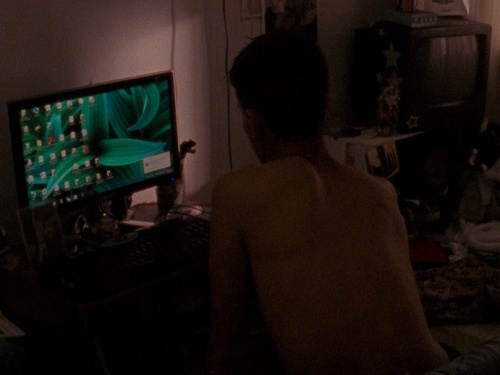The Art of Hunger: Redefining Third Cinema
In advance of the ICA Cinematheque season We Must Discuss, We Must Invent!—which opens on 8 July with Ousmane Sembène's Ceddo—ICA Film and Cinema Co-ordinator Nico Marzano examines the concept of Third Cinema for the ICA Blog.
Third Cinema continues to pose difficult and challenging questions. There is endless debate about Third Cinema and its strategies and tools for documenting social reality: from the 1970s onwards, appreciation of its value and aesthetics has unfolded through controversial approaches and different views on this radical form of cinema. The idea of Third Cinema was conceived in the 1960s as a set of radical manifestos and low-budget experimental movies by a group of Latin American filmmakers who defined a ‘cinema of opposition’ in reaction to Hollywood and European models. This new form of expression came from three different areas of the world: Asia, Africa, and Latin America. At the time these three zones were labelled as the ‘Third World’.
Even though scholars like Paul Willemen have patiently explained how the notion of Third Cinema was most emphatically not Third World Cinema, these two concepts have often been accidentally or intentionally confused. As an concept, Third Cinema came primarily from two movements: the Cuban Revolution of 1959 (especially through the efforts of Che Guevara) and the Brazilian Cinema Nôvo championed by Glauber Rocha who caused an uproar with his manifesto titled The Aesthetics of Hunger [PDF] in July 1965.
Film academics such as Michael Chanan have suggested that some of the roots of Third Cinema could be traced back to Italian neo-realism and John Grierson’s notion of social documentary, ultimately being influenced by Marxist aesthetics. The term ‘Third Cinema’ was invented by the Argentinean film makers Fernando Solanas and Octavio Getino, who produced and directed the most important documentary for the Third Cinema movement in the 1960’s, La Hora de los Hornos (1968, The Hour of Furnaces). In concert with the film they produced an important essay that would come to define the radical ideas of this movement: Towards a Third Cinema. While Solanas and Getino are central to Third Cinema, the concept of Third Cinema is a global one, connecting a variety of different films from Africa, Latin America and even Europe.
In the words of Teshome Gabriel, the principle characteristic of Third Cinema is really not so much where it is made, or even who makes it, but instead the ideology it espouses and the consciousness it displays. We might not be far from the truth when we claim that Third Cinema is the cinema of the Third World which stands opposed to imperialism and class oppression in all their ramifications and manifestations. Third Cinema has offered a significant means of revealing social realities through the documentaries of Argentina, Chile and Algeria and the Black Independent documentaries of the United Kingdom.
A self-conscious, ideological opposition to Hollywood is the first marker of Third Cinema, while identification with national liberation is the second most common theme (at least in the early writings on the subject). The idea of “nation” in this discourse, however, is always at odds with a globalized Third World identification. While the tri-continental definition of radical film aesthetics defies national boundaries, Willemen notes that ”…if any cinema is determinedly ‘national’ even ‘regional’ in its address and aspirations, it is Third Cinema”. The politico-cultural trends of the 1980s and 1990s have demonstrated the need for a definitive reappraisal of the terms in which a radical practice like Third Cinema had been conceived in the 1970s. Questions of gender and cultural identity received new inflections, and traditional notions of class-determined identity were soon seen as inadequate.
‘When one creates one does not think of the world; one thinks of his own country. It is, after all, the African who will ultimately bring change to Africa’. - Ousmane Sembène.
Here Sembène, the Senegalese director, expresses not only his own particular philosophy, but on a larger scale the project of Third Cinema as it has been practiced in Africa. Throughout his career, Sembène has encountered several problems with Senegalese censorship: his works have been either delayed or even forbidden [PDF]. Sembène has often portrayed Africa as a land consisting of different oppositional groups, each of which fights for independence and cultural identity. His film Ceddo (1977) represents one of the most important pieces of Third Cinema in Africa. The title itself quite critical of the colonization process: its proper English translation is “outsider”. This word ceddo seems to portray and verbalize the struggle of ordinary Africans resisting a conversion to Islam and even Christianity. According to Sembène, the ceddo is a lively mind or spirit, knowledgeable of the double meaning of words and even their forbidden meanings. The ceddo is innocent of sin and transgression. The ceddo is jealous of his/her absolute liberty. For a long time, African Third Cinema was also the cinema of silence, the silent witnessing an African spirituality. Ousmane Sembène has been recognised as the cinematic voice of Senegal, and his themes are often overtly and outspokenly Senegalese.
Third Cinema includes a variety of subjects and styles, so this form of cinema can ideally be practised anywhere: we should therefore underline the importance of the Black Independents operating in the UK, this ”cinema of black diasporas” in itself being a new variation of Third Cinema. The importance of Third Cinema as a medium produced from within European boundaries is embodied by the Black Audio Film Collective, formed in Britain in the 1980s. Despite their struggles in finding a new form of expression under Thatcherism, the Black Audio Film Collective assumed a fundamental role in the presence of Third Cinema in a global reality. Thus, talking about Third Cinema as a cinematic expression coming only from Latin America, Africa and Asia is a way of dismissing the powerful impact that this movement has had in European countries. ‘Black diaspora’ is a relatively modern term used to describe the new ethnic groups that have surfaced all over Europe. By supporting such groups of independent filmmakers like the members of Black Audio Film Collective, it is possible to redefine the borders and the tools of Third Cinema in these years of migration, globalization and diasporas.
The multiplicity of identities and histories needs to be displayed through subjects able to read a dialogue between new technologies, class, gender and a mix of languages. Due to a changing multiracial and multicultural reality, Third Cinema must reinvent itself in terms of gender, class and geographical identity – and consequently in terms of narrative structure and aesthetics. Looking for new ways to co-produce new Latin American, African and Asian cultural identities, the filmmakers work collaboratively with one ultimate goal: not a removal of the local, but a meaningful re-location of it in an ever expanding global community. This redefinition of a new and necessary form of Third Cinema must not leave behind the primary concerns in the production of revolutionary films. The thrust of Third Cinema is undoubtedly a call for social and cultural transformation. Even as historical contexts and aesthetic responses change, its mandate to face post-colonialism and to protect local identities still holds. The present aim of Third Cinema, if we ignore geographical borders, is to continue in seeking its own place in a global context. Third Cinema is not the cinema of the Third World, but is the cinematic expression of the desire to express ourselves and our identities - though the general tendency in politics and culture is a push towards appropriation and annulment. ■
The ICA Cinematheque season We Must Discuss, We Must Invent! runs from 8 July to 2 September 2014.
This article originally appeared in the online film journal 16:9.
This article is posted in: Articles, Film
Tagged with: Third Cinema, Nico Marzano, Film





